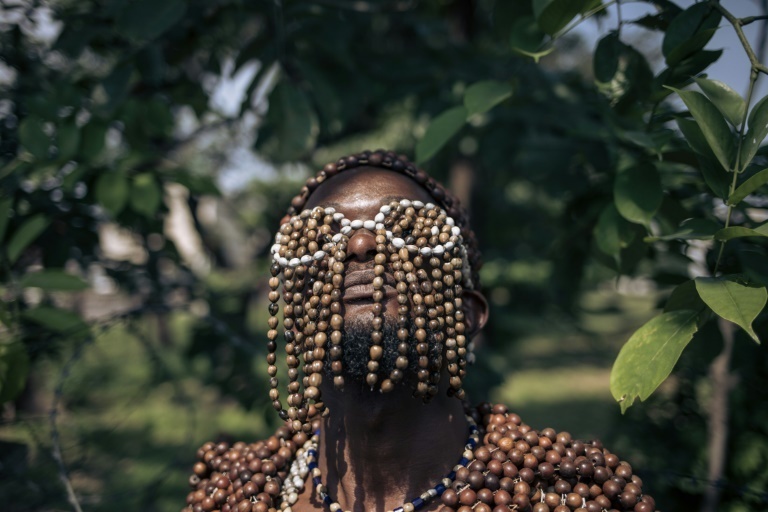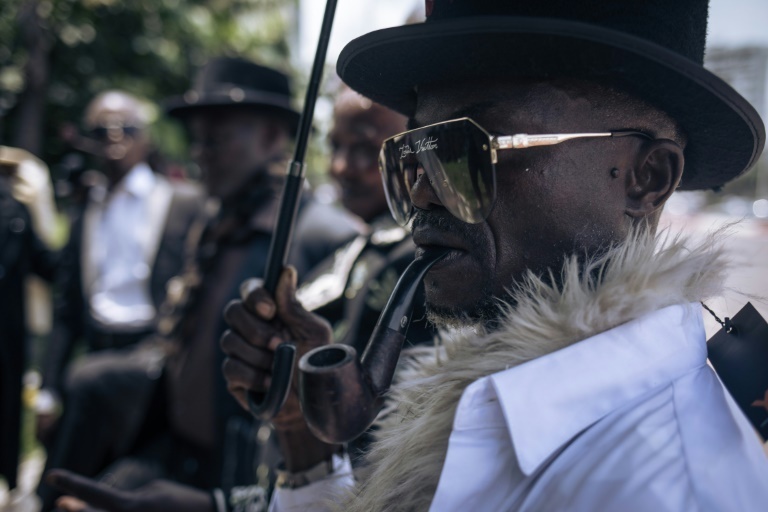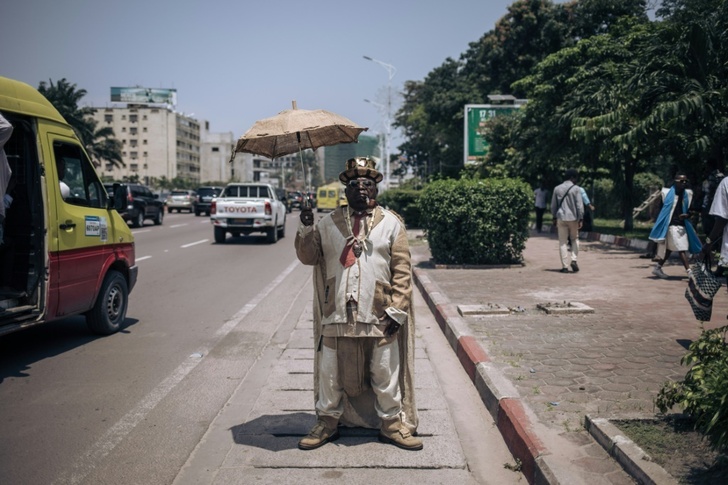Flamboyant dandies paraded near the tomb of one of their icons in DR Congo's capital Kinshasa, flaunting coveted designer labels in stark contrast to the grinding poverty surrounding them.
Dozens of extravagantly dressed dandies, known locally as sapeurs, turned up on Friday to commemorate the death of Stervos Niarcos, a pop star and one of the most famous of Congo's legendary dandies.
Niarcos, who died in 1995, epitomises the fanatical pursuit of elegance for many in the abysmally poor central African country.
His 1989 hit, "La Religion Ya Kitendi," eulogised dressing well as one of life's highest goals.
On the anniversary of Niarcos's death, sapeurs strutted up and down the pavement of Kinshasa's main thoroughfare, the Boulevard du 30 Juin, before gathering around his grave in an adjacent cemetery.
One sapeur named Ibrahim sported an ankle-length plaid skirt paired with a jacket and long white cape.
A 52-year-old dandy who gave his name as Maitre Contrebasse showed off blue dungarees from Japanese fashion designer Yohji Yamamoto.
"It's very expensive," said the school mathematics teacher.

The DRC is one of the poorest countries in the world, where two thirds of the population of about 100 million people live on under $2.15 a day, according to the World Bank.
Some of the sapeurs wore outfits of their own design and evoked the mystical significance of dressing well.
Kadhi Kadhitoza, who delighted in challenging onlookers on his knowledge of luxury brands, wore a burlap suit of his own making, decorated with cowrie-shell buttons.
He called Niarcos "our pope," and noted that God himself had fashioned garments of skin for Adam and Eve after they sinned in the Garden of Eden.
"Everyone has their way of praying," said Kadhitoza, 53.
- 'God of La Sape' -
The dandies later converged on Niarchos's tomb, going one by one to pay their respects, with some reciting the names of the brands they were wearing.
"This is Donatelli," said one sapeur standing inside the small mausoleum, demonstrating his white-and-gold T-shirt.

Another sapeur led a group in prayer.
"Oh God of La Sape," he called out. "You were the first stylist, the first designer, who did not want to see the nakedness of man after Adam's sin".
'Sape' stands for Societe des Ambianceurs et des Personnes Elegantes, which roughly translates from French as the Society of Ambiance Makers and Elegant People.
Central Africa's dandy tradition, which was born in neighbouring Congo-Brazzaville, traces it origins to the colonial era when locals encountered European fashion.
It is for many a means of escape and something joyful and carefree in the midst of poverty, corruption and conflict.
- 'Show of force' -
Andre Yoka Lye, a director at the national arts institute in Kinshasa, said the sapeur phenomenon became more pronounced during the post-World War II economic boom in colonial Belgian Congo.
Followers of the movement were then dedicated to imitating European style and living joyfully.

"La Sape is a kind of demonstration of strength beyond one's means," he explained.
But Yoka said he thought many modern sapeurs were frivolous figures, particularly given that conflict is raging in the DRC's east.
The M23 rebel group, allegedly backed by Rwanda, has captured swathes of territory and displaced hundreds of thousands of people in eastern Congo since late 2021.
"We're at war," Yoka said. "We shouldn't be dressing like circus clowns".
There were nonetheless allusions to the conflict during the sapeur parade on Friday.
One dandy wore glasses dripping with beads, which he said represented the tears of the people in the east.
Kadhi Kadhitoza, the dandy wearing the burlap suit, said the sapeur tradition is an indelible part of Congolese culture.
"It's for the Congolese, for us," he said.
bur-eml/ach
© Agence France-Presse
Your content is great. However, if any of the content contained herein violates any rights of yours, including those of copyright, please contact us immediately by e-mail at media[@]kissrpr.com.
Source: Story.KISSPR.com

